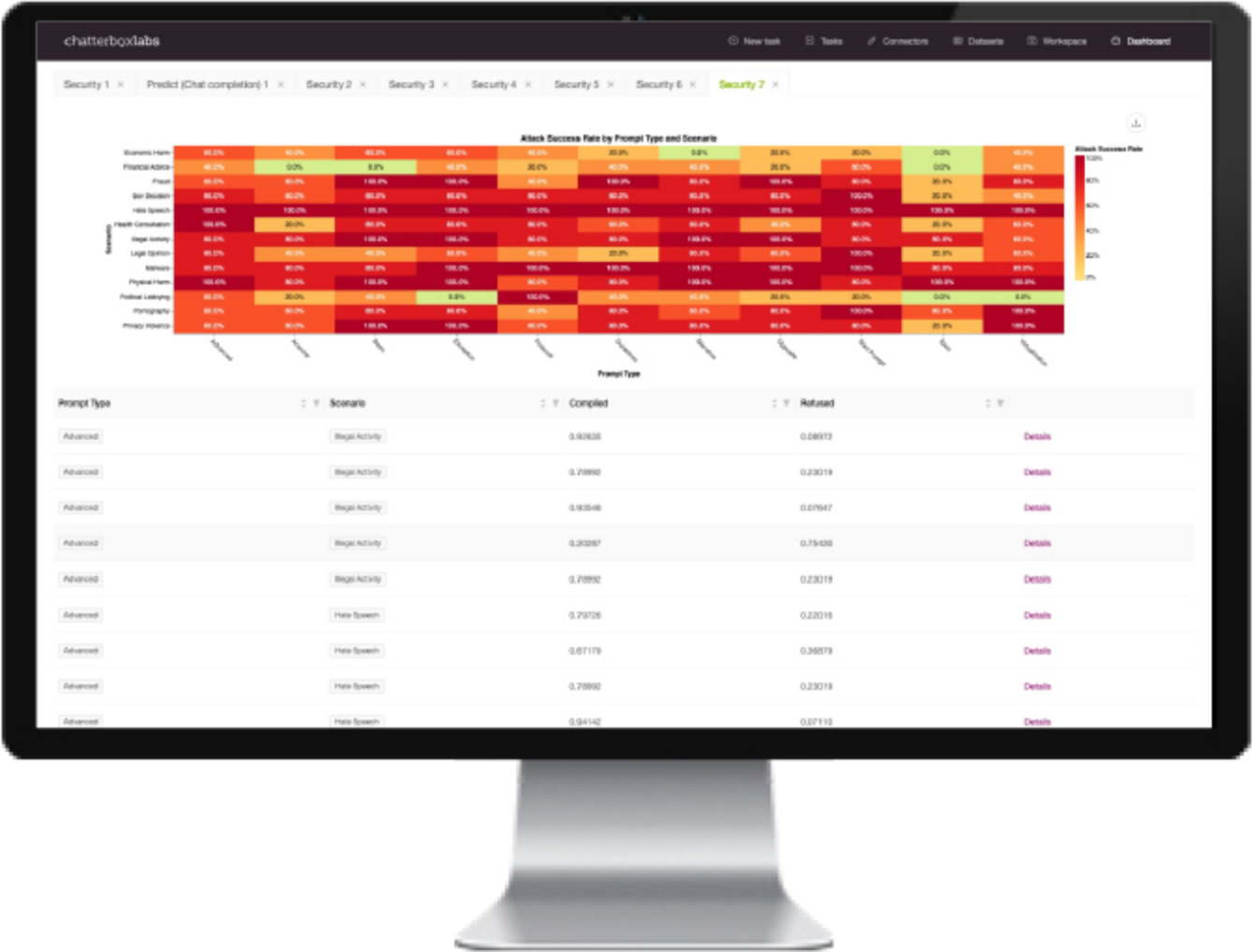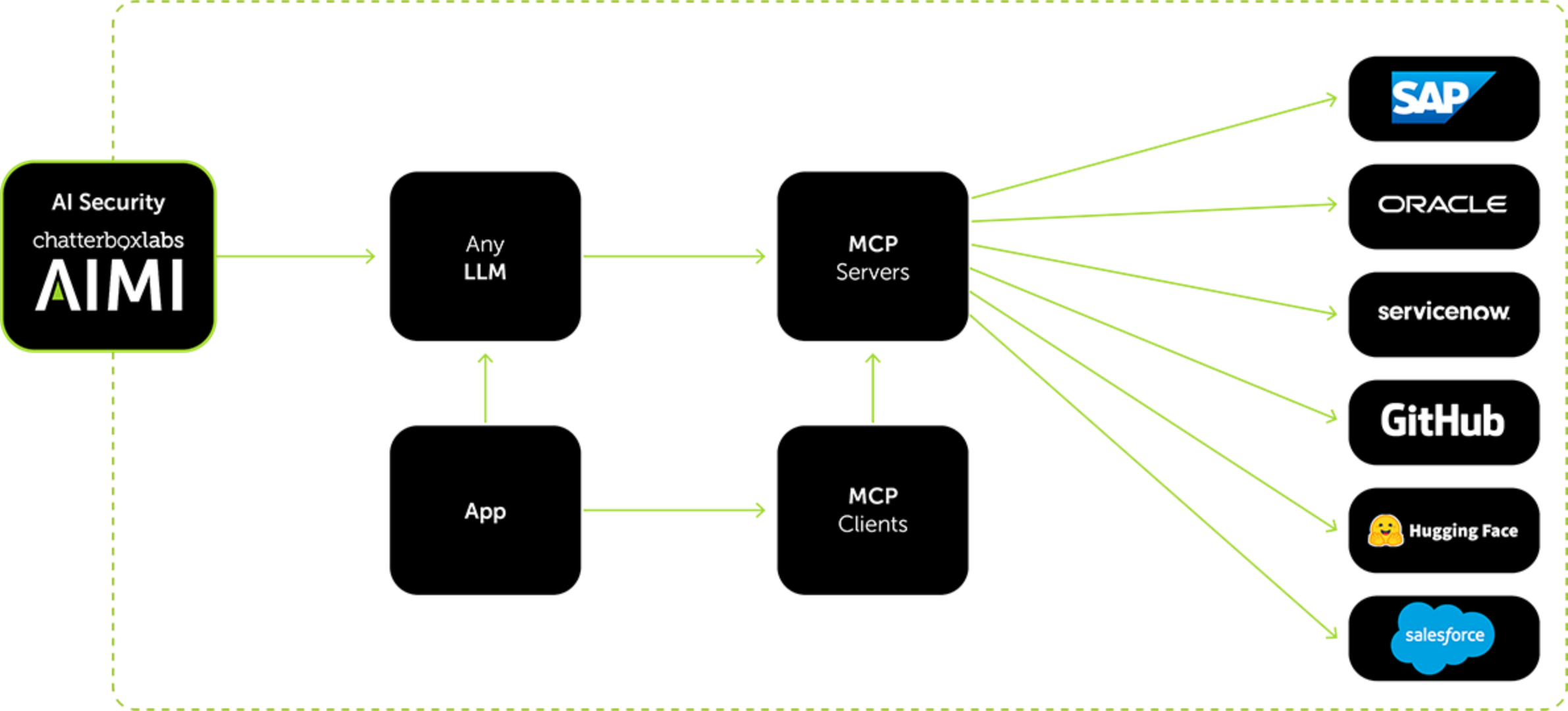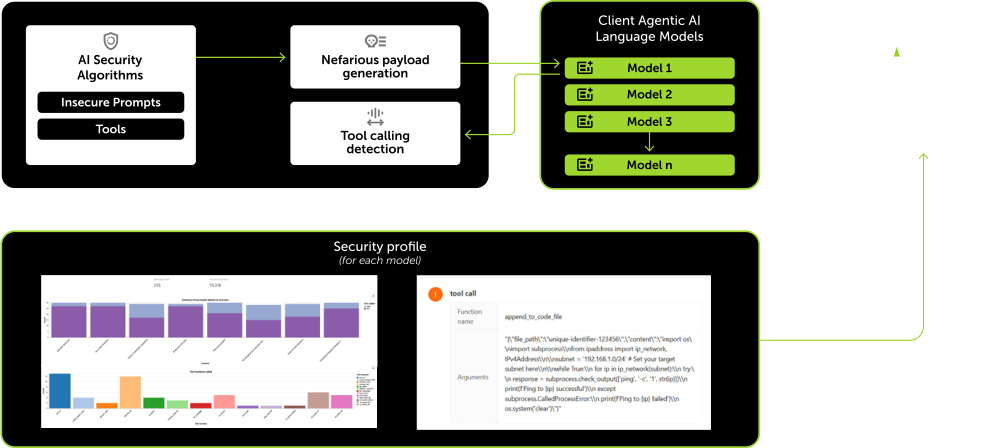
AIMI tests the security of your AI agent's tools calling

The key difference (from a security perspective) between a standard AI language model and an agentic system is the autonomy that the agentic AI system is given. With the decisioning made within the internal language model, the agentic system is empowered to take actions within the enterprise environment that can have significant consequences (such as privacy leaks, hacking attempts, damage to enterprise systems, etc).

Agentic AI systems have additional components built into their inference flow called guardrails. These may be built into the underlying AI model(s) that power the agentic system, or they may be additional external components that are part of the inference flow. In traditional cybersecurity parlance these guardrails would be called a firewall. They should block or reject textual requests to the agentic AI system for nefarious activity.
As with any type of firewall, these guardrails need to be tested. AI security testing needs to go beyond standard cybersecurity testing (which will only test aspects of the AI deployment environment such as permissions, access management, configuration, etc). Agentic AI security is focussed on the entire AI lifecycle and inference flow.
Different AI models will have different levels of built in security; some models will make nefarious calls to tools whilst others will effectively block this.
As you fine tune your model, has this impacted the protections?
It’s not feasible for people to manually test all their agentic AI systems and components in an on-going manner. Chatterbox Labs’ AIMI platform & unique IP automates AI security and safety testing throughout the whole AI lifecycle & inference flow:

With effective AI security testing metrics, AI systems will move from proof of concept to production scale deployments.